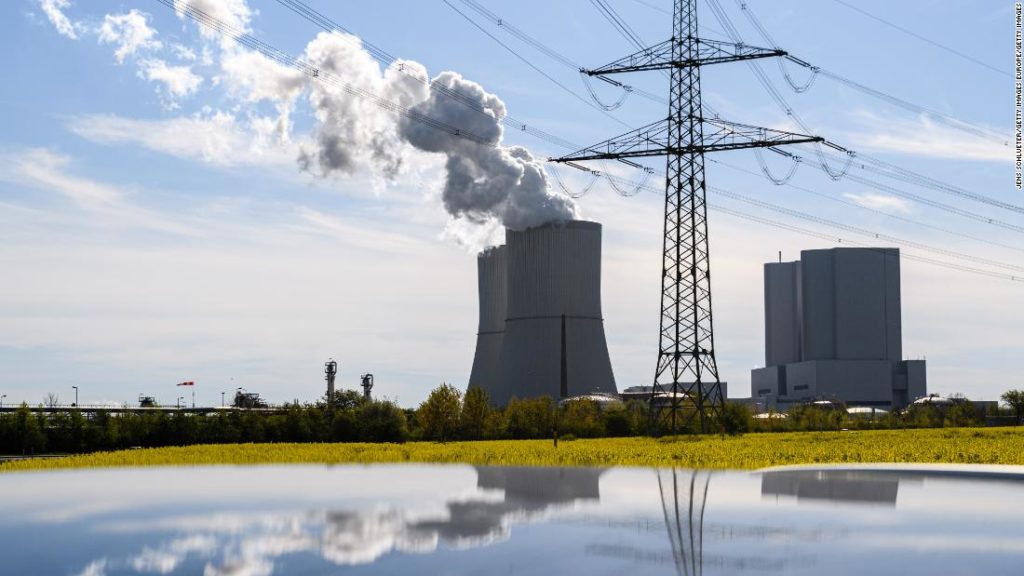The package of measures looks to fundamentally transform the world’s single largest trading bloc. It touches on almost every area of economic activity — from how citizens heat their homes and commute, to a total upheaval of manufacturing practices.
The EU last month enshrined in law its target to reduce emissions by 55% by 2030, compared with 1990 levels, but on Wednesday unveiled the aggressive 10-step program, titled “Fit for 55,” which is a roadmap for how it will achieve its reduction.
At a press-conference in Brussels on Wednesday, EU Commission President Ursula von der Leyen said that Europe had become the first continent with “a comprehensive architecture” to meet its climate ambitions.
“We have the goal, but now we present the roadmap to how we are going to get there,” she said.
“We know, for example, our current fossil fuel economy has reached its limits. And we know we have to move on to new model one that is powered by innovation, that has clean energy that is moving toward a circular economy.”
While the package is bold, climate activists have criticized the 55% target for not being strong enough to contain global temperatures to 1.5 degrees Celsius above pre-industrial levels.
The plan is also unlikely to be implemented in the way that von der Leyen and her fellow commissioners have envisioned. First, it must go through the EU’s exhaustive legislative process. It will need to be read, amended and approved by both lawmakers in the EU Parliament and the EU Council, the forum in which the elected leaders of each member state debate such matters.
There are likely to be problems in both. EU officials admitted to CNN that even getting the college of commissioners to agree on what von der Leyen put forward on Wednesday was a struggle.
Some member states are poorer than others, meaning the transition to Brussels’ goals are harder, while other member states have economies built on industries that by their nature produce more carbon emissions.
It will also be politically difficult, as member states are currently divided on many other pan-European issues — from rule of law to human rights — and will likely use this debate on climate change as a proxy for other ongoing rows.
What else is in the roadmap?
The proposed carbon border will place tariffs on certain goods produced outside the bloc, depending on their carbon footprint, subjecting them to the same standards that already exist for good produced within the EU.
The plans is to discourage EU companies from importing cheaper materials from places where environmental standards are lower. In the initial implementation, the sectors affected would include cement, iron and steel, aluminium, fertilizer and, crucially, electricity.
Petrol and gasoline fuels will see their minimum tax rate increased by significant margins, rising from €359 ($424) and €330, respectively, to €443 and €482 per thousand liters by 2033, while fuels like kerosene, for which the EU sets no minimum rate, will be charged €468 per thousand litres.
Another key pillar of Wednesday’s package is a lowering of the cap in the EU Emissions Trading System (ETS), the world’s first and largest carbon market. Created in 2005, the ETS works by placing a cap on the carbon emissions companies within the EU are allowed to produce each year. If a company goes over, they are fined. They can also buy “allowances” from others in the ETS, roll over unused allowances. Over time, the cap set by the ETS goes down across the entire carbon market.
The plans — which form part of von der Leyen’s broader Green Deal, a key plank of her Commission’s 2019-2024 agenda — takes particular aim at transport, both personal and commercial, across the block.
Von der Leyen announced cars with combustion engines, for example, will not be produced within the bloc from 2035. Financial incentives will be offered to countries that replace traditional fuel with a sustainable alternative in aviation and maritime transportation.
Presenting the package, von der Leyen said that these measures, which would cost €500bn “at the Europe level alone” would also create financial “incentives for the private sector, so that they complement” the EU’s overall ambition.
Scientists say that the world must keep average global temperatures to within 1.5 degrees higher than pre-industrial to avoid more severe impacts of climate change.
You may also like
-
Afghanistan: Civilian casualties hit record high amid US withdrawal, UN says
-
How Taiwan is trying to defend against a cyber ‘World War III’
-
Pandemic travel news this week: Quarantine escapes and airplane disguises
-
Why would anyone trust Brexit Britain again?
-
Black fungus: A second crisis is killing survivors of India’s worst Covid wave

